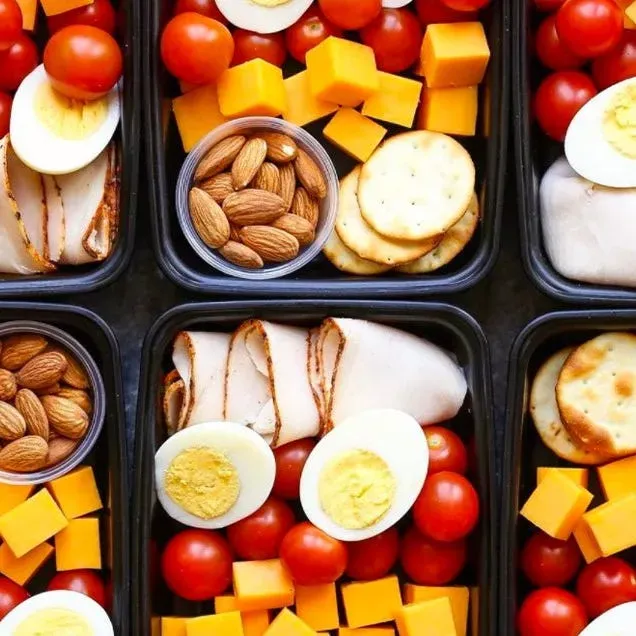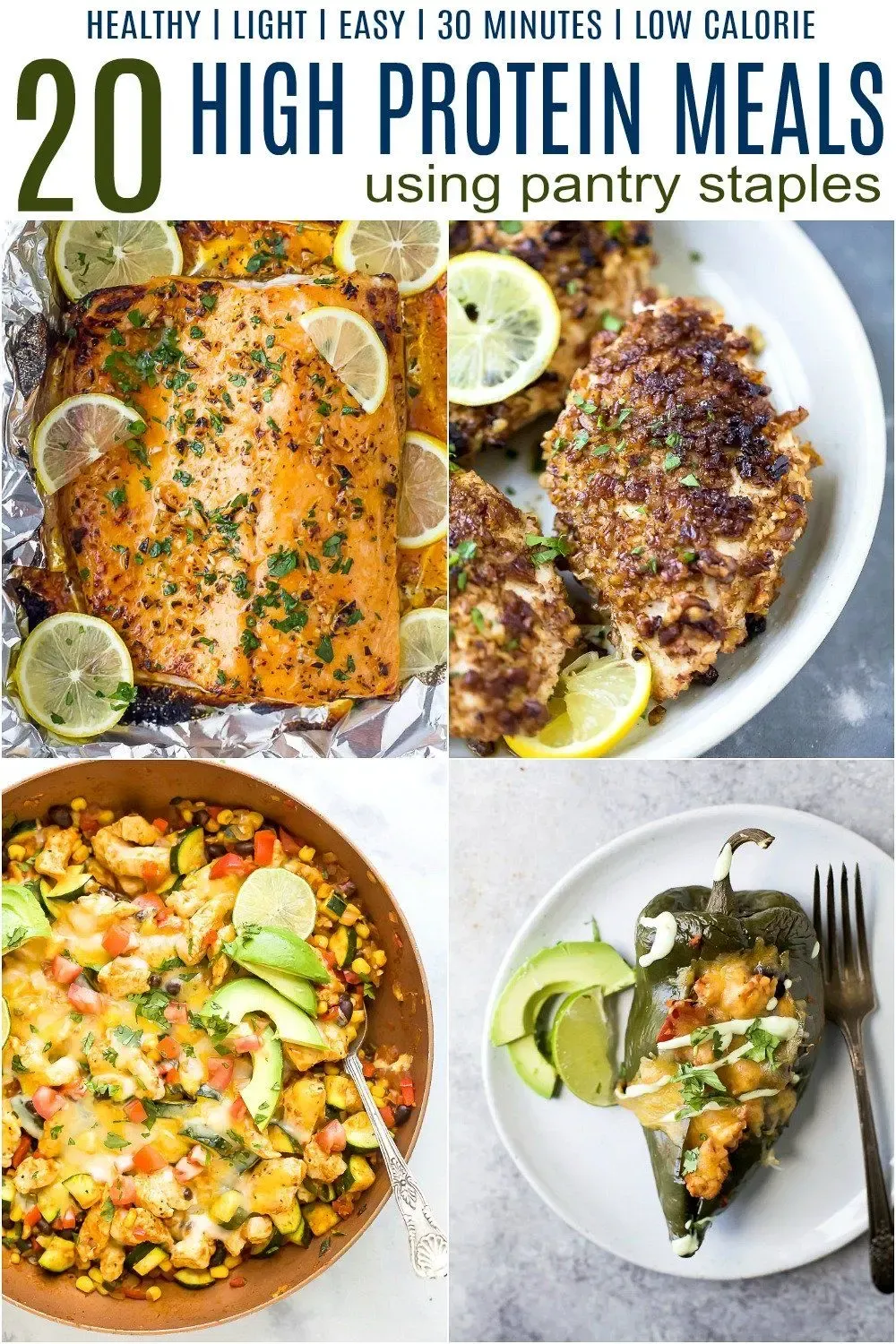Table of Contents
Ever hit that 3 pm slump, feeling like you could eat your own arm? Or maybe you finish dinner, only to find yourself rummaging through the pantry an hour later? If that sounds familiar, you might not be getting enough protein in your meals. It’s not just about hitting the gym; protein is the building block for muscle, yes, but it’s also key to keeping you satisfied, managing those sneaky cravings, and powering through your day without feeling drained. Navigating what to cook can feel like a chore, though. You want something that’s not just packed with protein but also tastes good and doesn't take forever to make. That’s where we come in. We’ve pulled together 5 high protein meals that actually deliver on flavor and function. Forget bland chicken and rice every night. We're diving into practical, delicious options that will keep you full longer, support your fitness goals, and make mealtime something to look forward to, not dread. Ready to swap the hunger pangs for sustained energy and real satisfaction? Let's get into these game-changing dishes.
Why Bother with High Protein Meals Anyway?

Why Bother with High Protein Meals Anyway?
Escape the Snack Attack Cycle
Look, nobody enjoys feeling hungry twenty minutes after they just ate. It's annoying, distracting, and usually leads you straight to the office vending machine or the pantry cookie stash. This is precisely Why Bother with High Protein Meals Anyway? Because protein sticks with you. It takes longer for your body to break down compared to carbs or fats, meaning you feel full, truly full, for a significant stretch. Think of it as your personal anti-snack shield. Eating a decent amount of protein at dinner, for instance, can mean the difference between sleeping soundly and being woken up by your rumbling stomach at 2 AM.
Build and Maintain Your Body's Framework
Protein isn't just about feeling full; it's the essential material for building and repairing tissue throughout your body. We're talking muscles, skin, hair, nails – the whole package. If you're lifting weights, running, or just living life, your body is constantly breaking down and rebuilding. Providing it with enough protein gives it the resources it needs to do that job efficiently. Skimp on protein, and you're essentially asking your body to build a house without enough bricks. It's not going to stand up well, or get stronger, for that matter.
So, beyond just feeling full, what's the real payoff?
- Supports muscle growth and repair, crucial whether you're an athlete or just want to stay strong.
- Helps manage appetite and reduce cravings for less-than-ideal foods.
- Boosts metabolism slightly, as your body uses more energy to process protein.
- Provides essential building blocks for hormones, enzymes, and other vital molecules.
- Contributes to bone health as you get older.
Keep Your Metabolism Humming Along
Digesting food requires energy, and protein requires the most energy to process compared to macronutrients. This is known as the thermic effect of food (TEF). While it's not a magic bullet for weight loss, consistently including protein in your meals means your body is burning a few extra calories just to break it down. More importantly, maintaining muscle mass, which protein supports, keeps your metabolic rate higher overall. It's a win-win: you feel satisfied and give your metabolism a little nudge in the right direction.
Breaking Down Protein Sources for Your Meals

Breaking Down Protein Sources for Your Meals
The Usual Suspects: Animal Protein
Alright, so you're sold on the idea of more protein. Great. Now, where do you actually get it? When most people think protein, they picture chicken breast. And yeah, that's a solid choice, lean and packed with the stuff. But the world of animal protein is way bigger than just sad, dry chicken. We're talking beef, pork, turkey – all excellent options. Don't forget seafood! Salmon is a superstar, loaded with healthy fats too, but tuna, shrimp, and cod are also protein powerhouses. And then there are eggs. Nature's perfect protein package, versatile enough for breakfast, lunch, or dinner. Even dairy gets in on the action with cottage cheese and Greek yogurt, which are surprisingly high in protein and can sneak into sweet or savory dishes. These sources are often called 'complete' proteins because they contain all the essential amino acids your body needs.
Choosing animal protein gives you a direct hit of high-quality amino acids. A four-ounce piece of chicken or fish typically serves up around 25-30 grams of protein. A few eggs? About 6 grams each. Cottage cheese? You can get 12-15 grams in just half a cup. It's pretty straightforward to rack up the protein count when you build your meal around one of these. Just remember that different cuts and cooking methods can affect the fat content, so pick what aligns with your goals. Grilled fish or lean ground beef are different beasts than fried chicken or a fatty steak, though even those have their place sometimes.
Greening Up Your Protein Game: Plant-Based Options
Maybe you're not into meat, or you just want to mix things up. No problem. Breaking Down Protein Sources for Your Meals absolutely includes the plant kingdom. Lentils, beans (black beans, chickpeas, kidney beans), and peas are fantastic sources. A cup of cooked lentils, for example, gives you about 18 grams of protein, plus a ton of fiber. Tofu and tempeh, made from soybeans, are incredibly versatile and soak up flavors like a sponge. You can grill them, stir-fry them, even scramble tofu like eggs. Edamame makes a great snack or addition to salads and bowls.
Nuts and seeds also contribute, though often come with more fat, so portion size matters. Quinoa, often thought of as a grain, is actually a complete protein source, offering about 8 grams per cooked cup. While some plant proteins might be lower in certain amino acids compared to animal sources, eating a variety throughout the day ensures you get everything you need. Combining beans and rice, for instance, creates a complete protein. It's all about smart pairing and not relying on just one or two sources.
Protein Source | Approximate Protein Per Serving | Serving Size |
|---|---|---|
Chicken Breast | 25-30g | 4 oz cooked |
Salmon | 23-25g | 4 oz cooked |
Lean Ground Beef | 20-25g | 4 oz cooked |
Eggs | 6g | 1 large egg |
Greek Yogurt (Plain, Nonfat) | 20-23g | 1 cup |
Cottage Cheese (Low-fat) | 12-15g | 1/2 cup |
Lentils | 18g | 1 cup cooked |
Black Beans | 15g | 1 cup cooked |
Tofu (Firm) | 10g | 1/2 cup |
Quinoa | 8g | 1 cup cooked |
Our Top 5 High Protein Meals to Build Muscle and Stay Full

Our Top 5 High Protein Meals to Build Muscle and Stay Full
Tired of Bland? Let's Talk Real Food
enough with the theory. You're here for the grub, the actual dishes that won't leave you dreaming of pizza an hour later. Finding 5 high protein meals that aren't a culinary punishment is the goal. We've sifted through the endless "chicken and broccoli" cycles to bring you options that are genuinely satisfying, relatively easy to pull off, and pack a serious protein punch designed to help you build muscle and stay full. These aren't restaurant-level complicated; they're designed for your kitchen, your schedule, and your stomach. Let's get into the specifics because nobody got strong or stayed full on vague intentions. We're talking concrete recipes you can actually make tonight.
Meal #1: The Power Bowl Champion & Meal #2: Speedy Salmon Saver
First up, the customizable champion: the Chicken and Quinoa Power Bowl. This thing is a workhorse. Start with a base of quinoa (remember, it's a complete protein!), add grilled or baked chicken breast (or opt for chickpeas or black beans for a plant-based twist), then pile on roasted veggies like broccoli, bell peppers, and sweet potato. Drizzle with a simple tahini or peanut sauce. It's got fiber, complex carbs, and easily hits 35-45 grams of protein depending on how much chicken you add. It’s also fantastic for meal prep. Make a big batch of the components on Sunday and assemble throughout the week. Next, the Speedy Salmon and Asparagus. Seriously, how easy can it get? Season a salmon fillet (salt, pepper, maybe some lemon and dill), toss some asparagus spears with olive oil, salt, and pepper, and roast them both on a sheet pan at 400°F (200°C) for about 12-15 minutes. Salmon is loaded with protein and those good omega-3s, while asparagus adds nutrients and fiber. A typical serving of salmon gives you 25-30 grams of protein right there. Pair it with a small side of brown rice or a simple salad if you need more carbs, but the protein and fat in the salmon are usually enough to keep you going. Here's a quick look at the protein power in these two:
Meal | Primary Protein Source | Estimated Protein Per Serving |
|---|---|---|
Chicken & Quinoa Power Bowl | Chicken Breast / Chickpeas | 35-45g (Chicken) / 20-25g (Chickpea version) |
Speedy Salmon & Asparagus | Salmon Fillet | 25-30g |
Meal #3: Lentil Soup Superstar, Meal #4: Cottage Cheese Pancakes, & Meal #5: Beef & Bean Chili
Moving on, don't underestimate the humble Lentil Soup. It's cheap, cheerful, and surprisingly high in protein, especially if you load it with plenty of lentils and maybe some diced chicken sausage or even leftover cooked chicken. A hearty bowl can easily offer 15-20 grams of protein just from the lentils and veggies, more if you add meat. It's also incredibly comforting and easy to make a huge pot for leftovers. For something a bit different, try Cottage Cheese Pancakes. Yes, pancakes. Blend cottage cheese (the protein MVP), eggs, and a little flour (oat or whole wheat work great). Cook them like regular pancakes. Half a cup of cottage cheese is around 12-15g of protein, and two eggs add another 12g. Top with some berries or a tiny bit of maple syrup. It feels like a treat but starts your day (or serves as a dinner-for-breakfast) with a serious protein boost. Finally, the classic, hearty Beef and Bean Chili. Ground beef is a solid protein source (about 20-25g per 4oz cooked), and when combined with kidney beans or black beans (another 15g per cup), you've got a protein powerhouse. Add tomatoes, onions, peppers, and spices, let it simmer, and you have a flavorful, filling meal that's perfect for cooler weather or just serious hunger. It’s another one that’s even better the next day. These 5 high protein meals cover different cooking styles and flavor profiles, proving that boosting your protein doesn't mean sacrificing taste or variety.
Tips for Prepping and Perfecting Your High Protein Meals

Tips for Prepping and Perfecting Your High Protein Meals
Make Protein Prep Your Weekend Ritual
Alright, you've got the recipes, you know *why* you need protein, but let's get real – cooking a high-protein meal from scratch every single night after a long day is often asking too much. This is where mastering Tips for Prepping and Perfecting Your High Protein Meals comes into play. The secret weapon? The weekend batch cook. Dedicate an hour or two on Sunday to cook off a few pounds of chicken breast or ground turkey, roast a big pan of veggies, or cook a pot of lentils or quinoa. Having these components ready to go in the fridge makes throwing together those 5 high protein meals during the week ridiculously easy. Think of it as setting yourself up for success, rather than relying on willpower when you're tired and hungry.
Burning Questions About High Protein Meals Answered

Burning Questions About High Protein Meals Answered
How Much Protein Do I Actually Need?
This is the question everyone asks, and honestly, the answer isn't a single number etched in stone for every human on the planet. It depends. Your activity level plays a huge role. If you're mostly sedentary, you need less than someone hitting the gym hard or working a physically demanding job. A common guideline tossed around is 0.8 grams of protein per kilogram of body weight for the average person. But if you're trying to build muscle, that number jumps significantly, often into the range of 1.6 to 2.2 grams per kilogram. For someone who weighs 150 pounds (about 68 kg), that's anywhere from about 54 grams for minimal activity up to 150 grams or more if they're serious about lifting. It sounds like a lot, but spread across 5 high protein meals throughout the day, it's totally manageable. Don't stress about hitting a precise number every single meal, but aim for a good dose, say 20-40 grams, at each main meal.
Can Eating Too Much Protein Be Harmful?
There's a persistent myth out there that high protein diets are bad for your kidneys. For healthy individuals with no pre-existing kidney conditions, this is generally not supported by scientific evidence. Your kidneys are quite capable of filtering the byproducts of protein metabolism. The concern usually arises for people who already have kidney disease, where a high protein intake can put extra strain on compromised function. For the average person, the bigger 'risk' of eating a lot of protein is simply consuming too many calories overall if you're not mindful of portion sizes or the fats that often come along with protein sources. Focusing on lean sources and balancing your meals with plenty of vegetables and fiber is key. Your body is pretty good at handling what you throw at it, within reason.
Consider these typical protein goals:
- Sedentary Adult: ~0.8 g per kg body weight
- Active Adult / Endurance Athlete: 1.2 - 1.7 g per kg body weight
- Strength Athlete / Building Muscle: 1.6 - 2.2 g per kg body weight
When Should I Eat My Protein?
For years, there was a lot of talk about the "anabolic window" – a short period right after a workout when you supposedly *had* to consume protein to maximize muscle growth. The current understanding is a bit more relaxed. While getting some protein in the hours around your workout is beneficial, the total daily protein intake is far more important than the precise timing. Spread your protein intake throughout the day across your meals. Aiming for roughly equal amounts at breakfast, lunch, and dinner can help keep you full and provide a steady supply of amino acids for muscle repair and synthesis. Don't skip breakfast; starting your day with protein sets a good tone. And a little protein before bed might even help with overnight muscle repair. But honestly, just focus on hitting your daily target consistently with your 5 high protein meals and snacks, and you'll be ahead of the game.
Wrapping Up Your High Protein Journey
So there you have it – not just a list of ingredients, but actionable ideas for 5 high protein meals designed to make your life easier and your body happier. We've talked about why protein matters beyond just building biceps, exploring how it keeps you full, curbs those snack attacks, and fuels your metabolism. From straightforward chicken dishes to plant-based powerhouses and seafood sensations, these recipes offer variety and flavor without demanding hours in the kitchen. The goal here is simple: make eating well less of a puzzle and more of a habit. Give these meals a shot, see how they make you feel, and ditch that constant feeling of needing 'just a little something else'. Eating high protein doesn't have to be boring; it just needs to be smart.